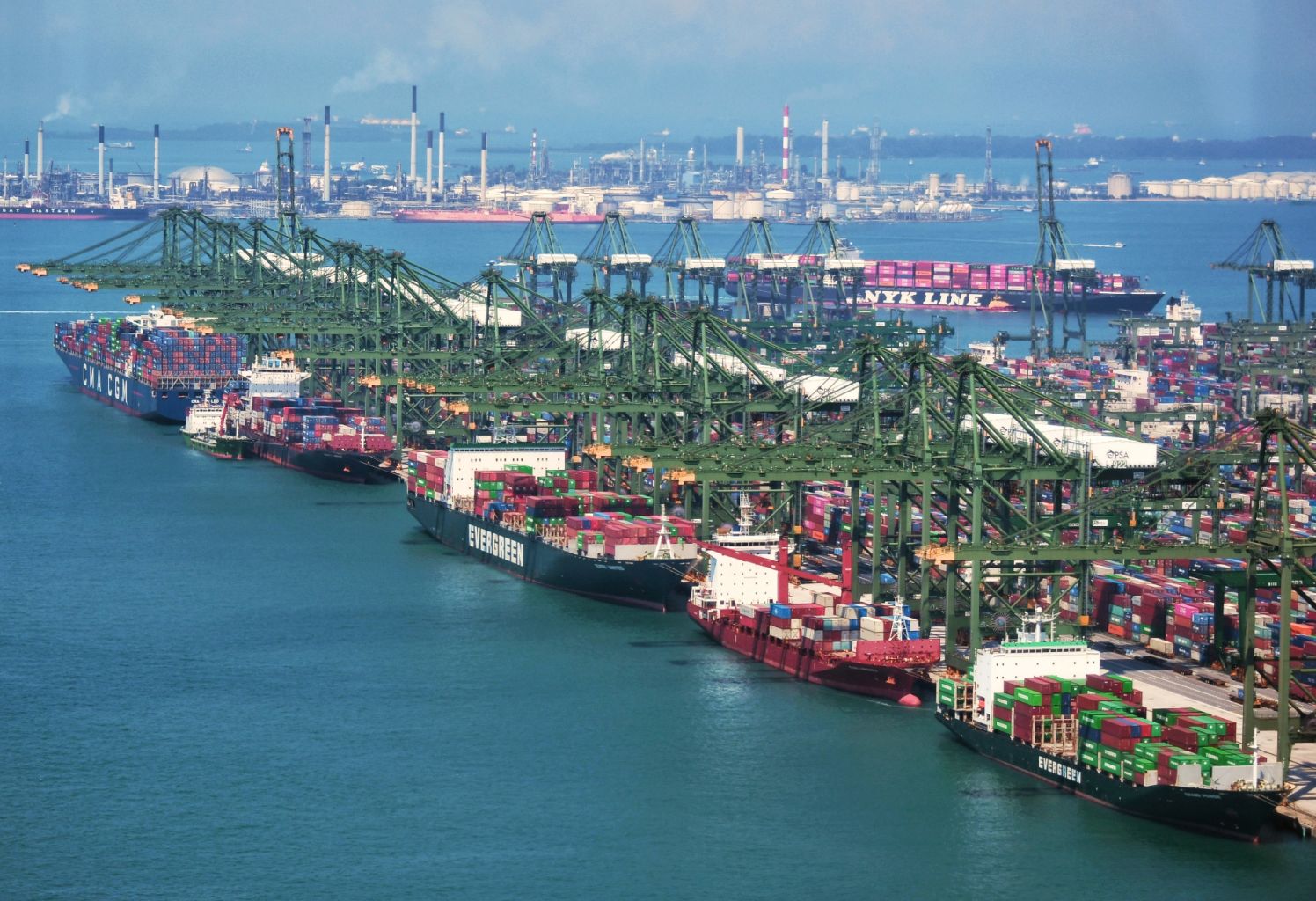Singapore and region stand to benefit from RCEP free trade agreement: MAS
Sign up now: Get ST's newsletters delivered to your inbox

Individual countries in the trade bloc are expected to see a small boost in their GDP of between 0.4 per cent and 0.6 per cent.
ST PHOTO: KUA CHEE SIONG
Follow topic:
SINGAPORE - The world's largest trade pact will reduce tariffs and harmonise trade rules, and Singapore and the region stand to gain from it by being more deeply plugged into global supply chains.
This is the conclusion drawn by the Monetary Authority of Singapore's biannual macroeconomic review released on Wednesday (April 28), which said that the Regional Comprehensive Economic Partnership (RCEP) is expected to increase regional trade flows and deepen cross-border production linkages among its 15 member economies.
The review noted that analysis based on past trade pacts such as Singapore's free trade agreements with China and South Korea shows that Singapore became more integrated into the supply chains centred on these countries.
In the same vein, the RCEP will boost the region's competitiveness as a location for supply chains, it said.
"It should therefore help to draw in investments, offering companies a broad array of production locations with differing comparative advantages, and the opportunity to export at preferential tariff rates to a wide economic area comprising both high-income consumers and a large and growing middle-income segment."
The RCEP brings together the 10 Asean countries, as well as Australia, China, Japan, New Zealand and South Korea to form the world's largest trade bloc, covering around 30 per cent of the world's population and gross domestic product (GDP).
Overall benefits from the RCEP fall into two categories.
The first is tariff reductions. These average a small decline of 0.7 per cent by the 10th year, and 1 per cent by the 20th year after the agreement comes into force.
The direct impact from this is limited, given that the RCEP consolidates Asean's existing trade agreements with other signatories.
Tariff cuts differ significantly across products and economies, with a more gradual pace of reduction in Cambodia, Lao PDR (People's Democratic Republic), and Vietnam, to allow more time for these lower-income economies to adapt to increased competition.
Output in sectors such as textiles and garments, leather, wood and paper will grow faster during the first 10 years of the agreement; while sectors such as agriculture, energy and mining, chemicals and electronics will expand at a faster pace in the longer term.
Individual countries in the trade bloc are expected to see a small boost in their GDP of between 0.4 per cent and 0.6 per cent.
The second category of gains comes from harmonisation of rules of origin, which govern how locally produced content is assessed in order for products to be eligible for preferential import tariff rates.
"With common rules of origin (CRO) under RCEP, companies can more optimally source raw materials and intermediate inputs from member countries, while benefiting from lower tariff rates," said the review.
It observed that although the region already has a large number of trade agreements, the RCEP brings together key upstream high-tech manufacturers such as Japan and South Korea, mid-stream producers including Thailand and the Philippines, and countries with relatively low labour costs such as Cambodia, Lao PDR and Myanmar, providing more opportunities for firms to enhance supply and trade linkages.
"The availability of CRO among the 15 countries is expected to facilitate cross-border integration of supply chains and to draw foreign direct investment flows into the region."
It added that Asean can offer a favourable proposition to firms seeking to diversify their production centres.
"Some signatories have additionally committed to raise foreign shareholding limits in certain domestic services sectors such as telecommunications and financial services," said MAS.

